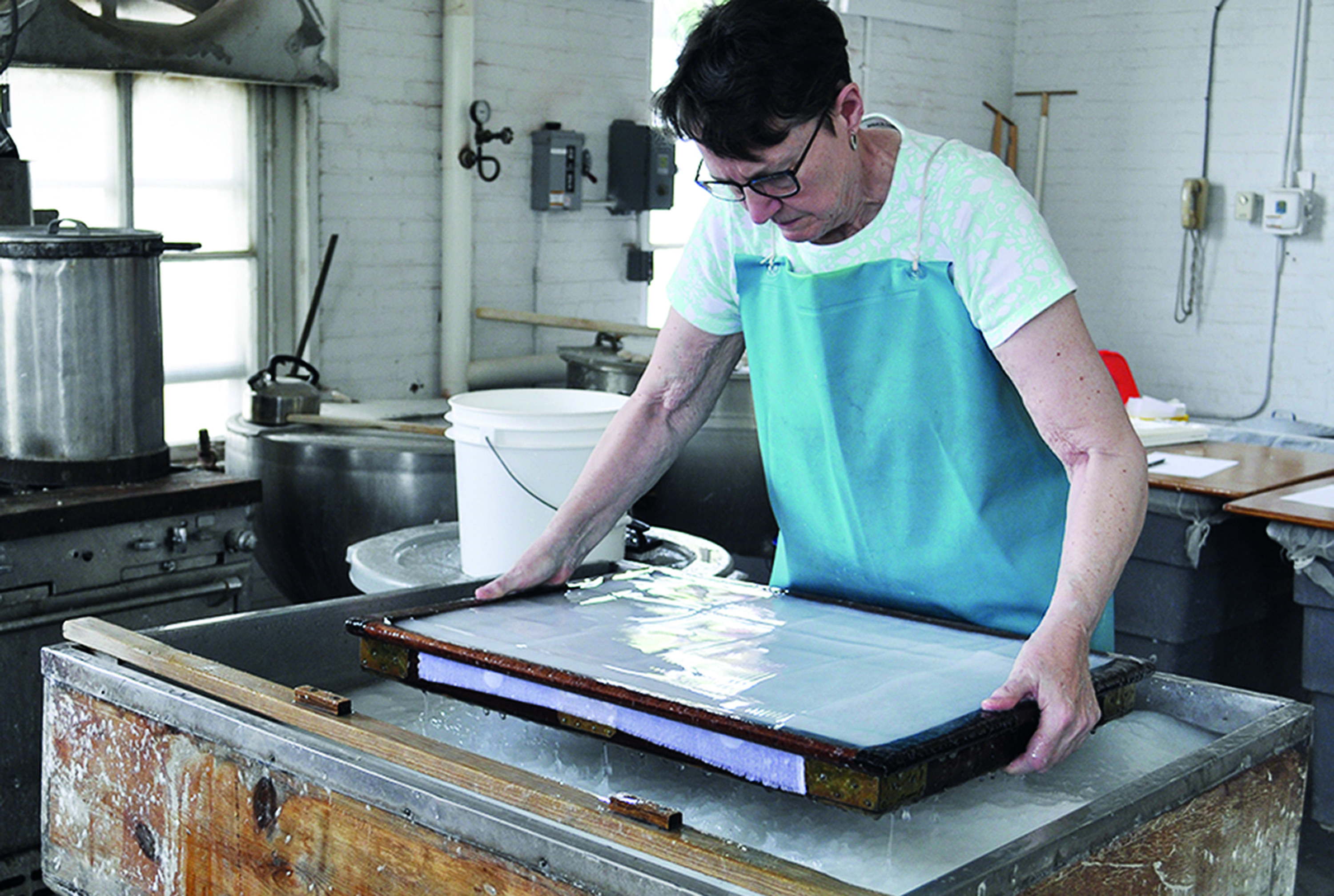In this video, Dr. Cathleen A. Baker (U-M Conservation Librarian Emerita) takes us through her years-long research into the earliest Western-made wove paper, including papermaking experiments to replicate the paper that first appeared in John Baskerville’s Virgil, published in Birmingham, England, in 1757. This paper, which is now the most commonly used type by people all over the world, had its origins in East Asia perhaps as long as a millennium ago, but until the mid-eighteenth century, it was unknown in the West.
In the early 1750s, John Baskerville, a prominent businessman, decided to become a printer/publisher and issued the first book from his press, Virgil’s Bucolica, Georgica, et Aeneis, which featured his new typeface, “Baskerville.” The book caused a sensation, though probably only a few people were aware that half of the paper used in the book had never been seen before; the other half was the typical so-called laid paper. (In the video, Baker explains the differences between these two papers.)

Cathy Baker making paper
Baker’s research began in 2015 when she examined, for the first time, a copy of the Virgil, which is in the collection of the University of Michigan Library’s Special Collection Research Center. Even though it had long been supposed that that paper was made on a handmould covered with a woven-wire screen (hence the name, wove), she theorized that the cover material upon which the paper was formed was actually a textile. Over the next ten years, Baker carried out a number of successful papermaking experiments to support her hypothesis, and she also has traveled throughout the U.S., and abroad to Ireland, the U.K., Germany, and Japan to examine copies. To date, she has seen 207, approximately one-third to one-quarter of the edition. In the next year or so, Baker intends to publish a book about her research and make the database of all of the copies she has examined available to the public.
View the video of Baker's talk!